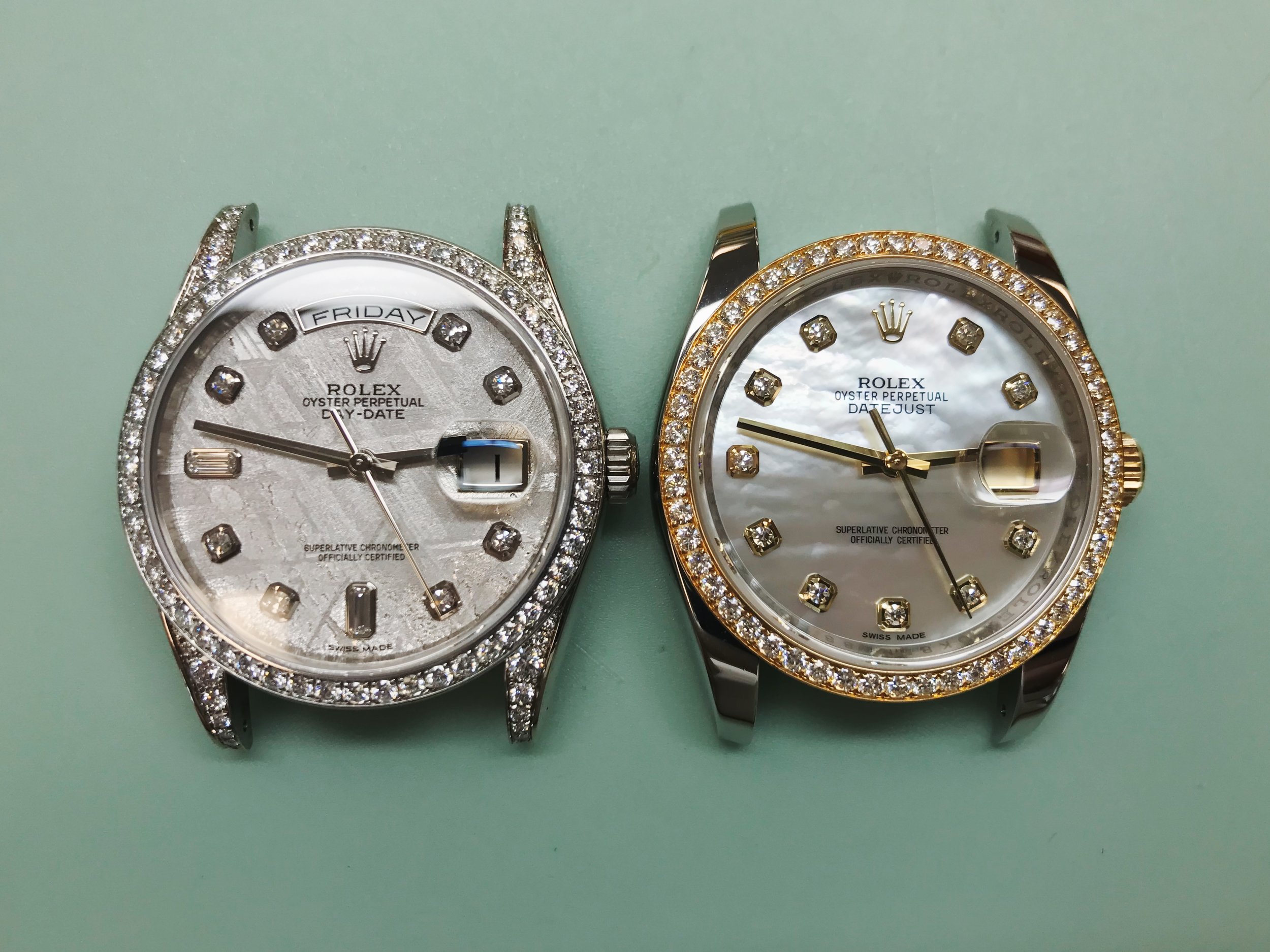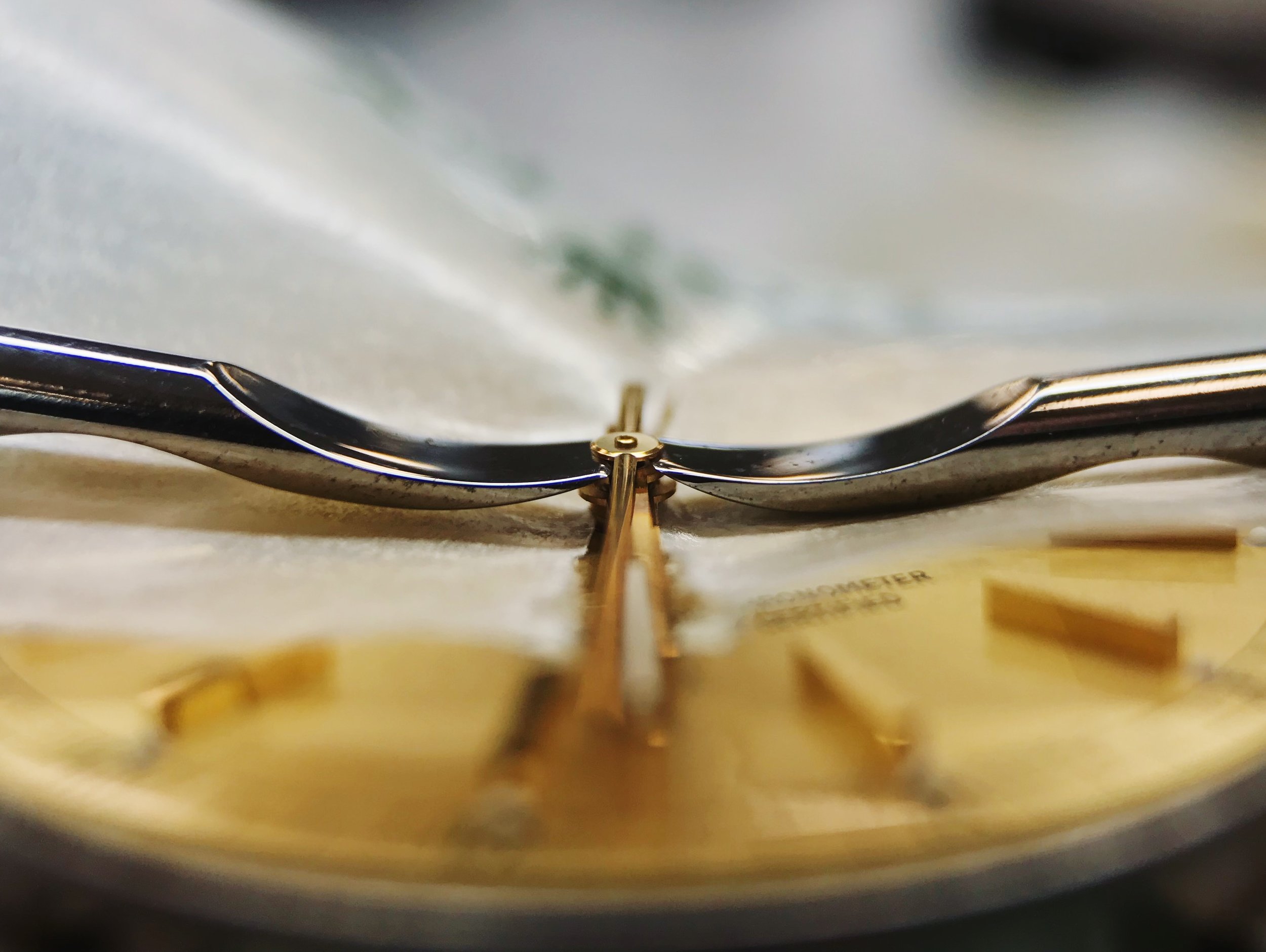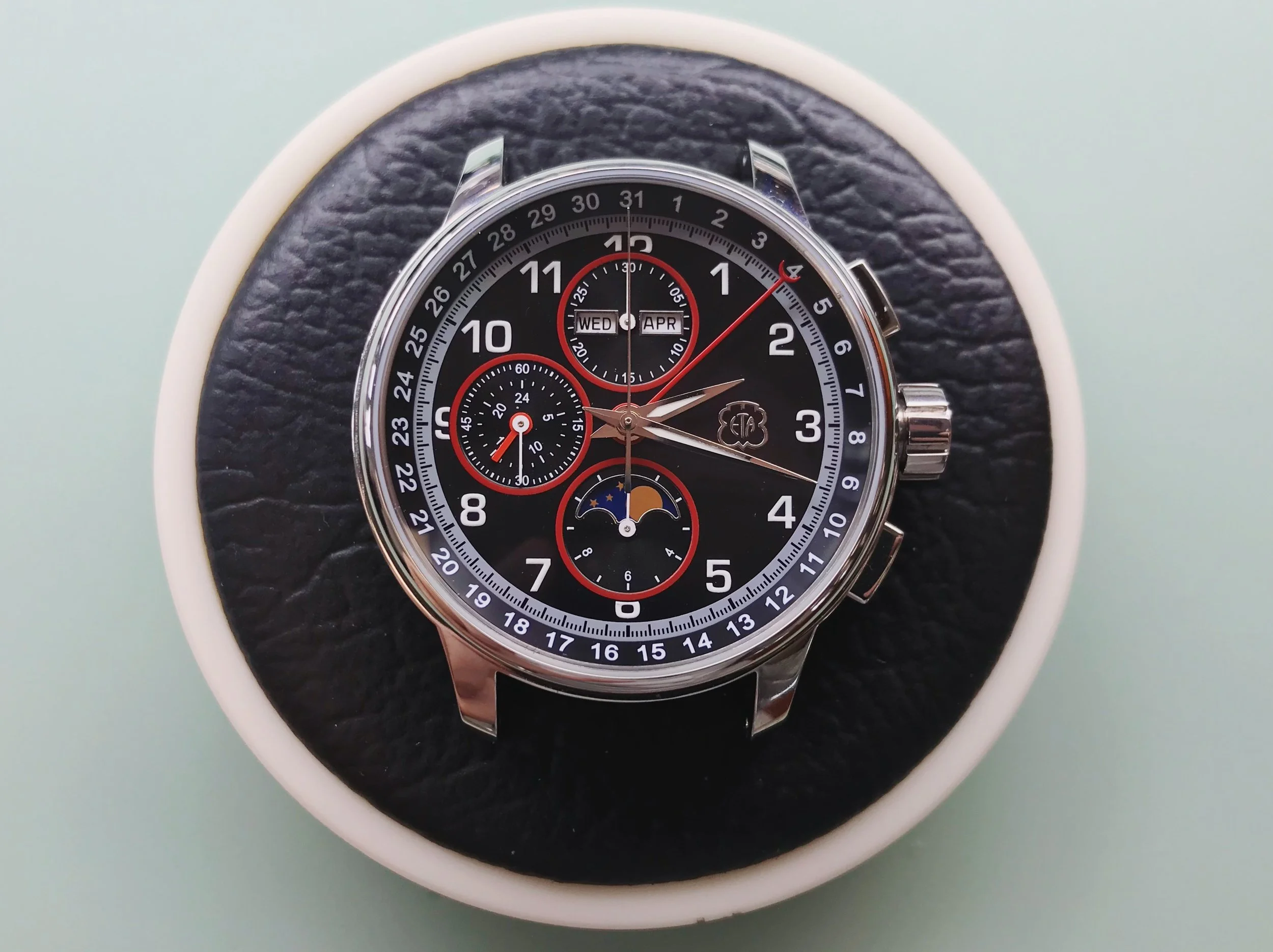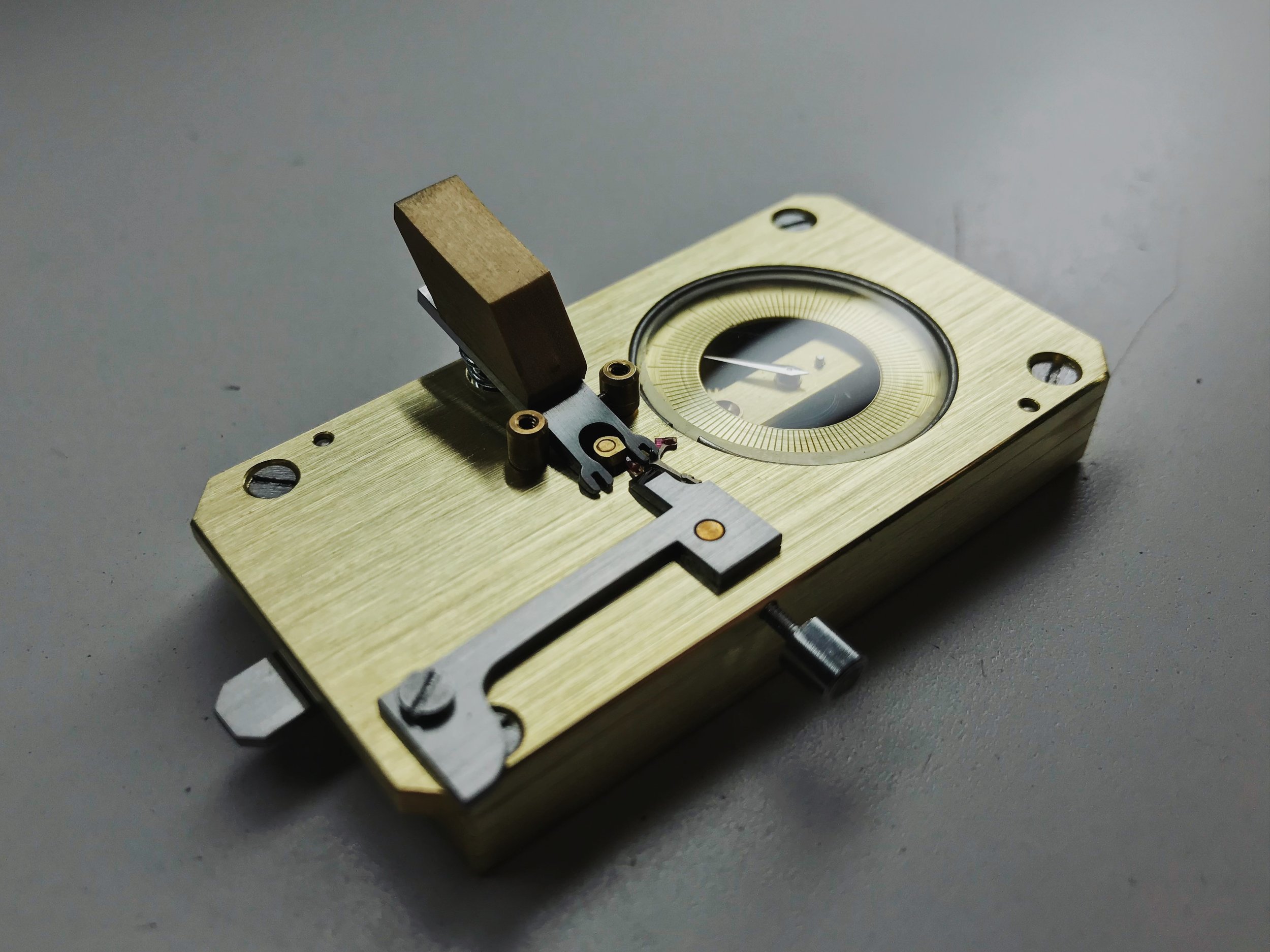Delicate Dials

Watch dials are always delicate, but precious dials made of exotic materials are in a completely different league.
These watches have two varieties of "stone dials," one made of meteorite, and the other made of mother of pearl. Both crack extremely easily, and both are unique—replacement dials may be available, but they will never have the same natural patterns of iridescence or metal crystals.
The greatest danger to dials like these is the decasing process. Typically, hands are removed with levers like these.
Levers brace against the dial and push upwards on the undersides of the hands, with a protective barrier (vinyl or wax paper) underneath to keep the dial from being marred. This works great for traditional dials, but the localized downward pressure can cause cracks in brittle materials. Using a wider dial protector made of a thick material like plastic or metal can help distribute the load, but any pressure downwards on a delicate dial can be dangerous.
Luckily, there's a tool for this. The Presto hand remover tool has been around for years, and it is designed to remove the hands by grabbing them with the steel jaws and pressing down on the dial with the plastic feet. If intentionally misused, however, the tool can be much safer.
Holding the Presto tool by its feet keeps them from moving, while allowing the jaws to grip securely. If the movement is properly clamped in a movement holder, the hand can be pulled off without any contact to the dial—though if the hour wheel is "free" and unconstrained by a date platform, it can still contact the bottom of the dial as the hour hand is removed, and all bets are off.
Mother of pearl is the more common of the two precious materials here, and is used on the dials of a variety of watches from numerous manufacturers. Mother of pearl is made of nacre, which lines the inner shells of oysters and other mollusks. Its iridescence is caused by different levels of diffraction among the tiny layers that make up the nacre sheet.
In thick pieces, the microscopic brick-like structure of mother of pearl's underlying elements makes it strong, but watches use very thin slices (some thinner than 0.5 mm) due to the fineness and quality of pattern that they require. This thin layer is bonded to a brass backing plate for added strength, but it is still prone to cracking if mishandled.
The brass plate allows easier mounting of dial feet and dial indices (which in this case are mounted diamonds).
Meteorite dials are significantly rarer, though they're still found on watches from a number of high-end brands.
Many meteorite dials appear to come from the same source, the Gibeon Meteorite, which was formed 4 billion years ago in a supernova and fell on Namibia in hundreds of pieces at some point in the undetermined past. I can't (and won't try to) say where any particular watch company gets their meteorite slices, though some companies give other countries of origin.
Meteorite dials tend to show off their Widmanstätten pattern, the geometric texture formed by the nickel-iron crystals that formed the meteorite itself. My understanding is that the meteorite slices are polished and then acid-etched to reveal the pattern, but I can't say for sure.
This meteorite dial is a solid piece, with no metal backing like the mother of pearl.
The dial feet and indices (again, diamond in this case) are affixed directly to the meteorite itself. It is metal after all, so perhaps they're able to solder the feet onto the backing? I have no idea how it's constructed in this case, but it's definitely different than on the mother of pearl.
Seating the dial was a hair-raising challenge, since the meteorite itself has zero flex, and simply had to be perfectly aligned to the seating holes, and pressed down evenly over both dial feet.
Luckily for me, both dials came on and off without issue. Be careful when choosing a watch with such a dial, and only take them to reputable watchmakers for service, or else you might be forced to deal with some unfortunate consequences!
Watchmaking student at the Lititz Watch Technicum, formerly a radio and TV newswriter in Chicago.
















